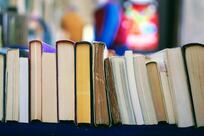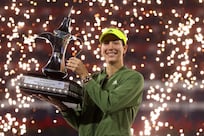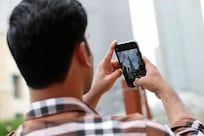One of the world's largest and most technologically advanced cities, Seoul is a densely packed, frenetic hub of humanity. But from most vantage points, the towering architecture and teeming urban life are dwarfed by the majestic mountains that frame the city and impart an aura of humility to the hubbub on the street. The renowned South Korean artist Lee Bul addresses these contrasts between Seoul's natural grandeur and mankind's urban aspirations in her fourth solo at PKM Gallery, one of Seoul's leading international commercial spaces.
On show until Nov 20, Lee's installation offers a distinctive and distressing insight into Seoul's unique relationship to its surrounding nature. Grimy chipped bathroom tiles cover the gallery floor and a portion of the nearby wall and rise up to form a massive bathtub filled with black ink. Around the mouth of the tub are peaked forms resembling the mountain ranges surrounding Seoul. Yet instead of a city nestled in the centre of the peaks, there is a forboding toxic pool absent of all signs of life.
Lee's bleak view of our ecological future is contrasted by a kind of utopian, futuristic aesthetic - optimistic forms which express a faith in technology and science. Lee hand cuts polyurethane panels and coats the gracefully curved structures with high-gloss enamel paint. She then slices into the paint, peeling back layers to expose slashes of contrasting colour. In one painting, for example, the smooth cherry red surface, which has the luxurious sheen of a new car, is interrupted by the a starburst of glittering silver paint underneath.
Dangling from the gallery's ceiling are a series of large-scale swirling shapes which seem to be three-dimensional versions of the abstract forms in Lee's paintings. One such work, a pine cone-shaped sculpture brings us back again to nature, yet at the same time is marked by cold, mechanical curves. Lee's work also reflects a distinctly Korean penchant for trompe l'oeil - a tendency to trick the viewer by making a hollowed-out frieze look like a relief or carving wood to look like cloth. Lee plays the same game here with a sculpture which appears to be made of intriguingly light steel, but up close reveals only a covering of iridescent grey and violet paint. Though at first glance icy and hard-edged, the work is textured with visible brushstrokes which introduce a tender, tactile quality and a sense of intimacy.
The next series of sculptures takes the mechanical aesthetic even further with cast polyurethane, paint, two-way mirrors and fluorescent lamps. Adorned with details resembling houses and roads, these works resemble three-dimensional maps of cities. Though Lee's paintings and sculptures seem like variations on the same theme, her mirrored works exist in their own category. They hang on the wall, yet never appear flat. Instead, they seem to be portals into their own multidimensional and perfectly ordered universe. These mirrored sculptures naturally bring the viewer's reflection into the work, highlighting the absence of the human body in this show.
In fact Lee is perhaps best known for her works which deconstruct society's beliefs about the female body. Born in Korea, she received her Sculpture BFA in 1987 from Seoul's prestigious, though conservative Hongik University. She then earned international renown for her feminist videos, performances, paintings and sculptures, much of which is inspired by the postmodern feminist scholar Donna Haraway and her writing on the relationship between technology and gender.
As one of her home country's most eloquent living abstract artists, who has pioneered the use of unconventional mediums such as synthetic resins, fabric, foam rubber and sequins, Lee has come to define contemporary South Korean sculpture for the wider world. In this exhibition, she appears deeply indebted to Seoul's arresting juxtapositions between timeless nature and the future.









